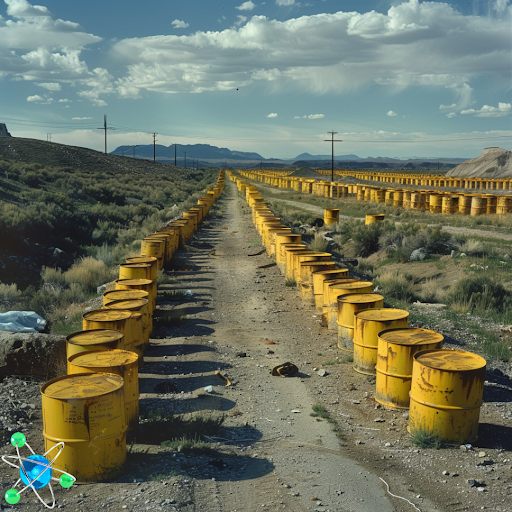
- HALEU (5-20% U-235) and LEU (3-5% U-235) are vital uranium fuels for nuclear reactors, medical research, and naval propulsion.
- The U.S. banned Russian uranium imports in May 2024, aiming to sanction Russia and boost domestic uranium production, which has significantly declined.
- The shortage of HALEU and LEU could impact nuclear reactor operations, prompting the U.S. to expand domestic uranium mining and enrichment to meet rising demand for clean energy alternatives.
High-assay low-enriched uranium (HALEU) and low-enriched uranium (LEU) are uranium fuels for nuclear reactors, medical research, and naval propulsion (air force carriers and submersibles). HALEU is uranium enriched to have a concentration of 5-20% isotope U-235, and LEU is enriched to have a concentration of 3-5%.
HALEU and LEU are crucial for reactors as they are the most efficient fuel sources, offering greatly enhanced performance, reduced waste, and longer operational cycles before refueling is needed.
With recent investment and bipartisan support for nuclear reactors and small modular reactors (SMRs), the importance of HALEU and LEU is highlighted with great importance to the future of nuclear energy.
However, HALEU, LEU, and uranium in general have been in a serious shortage this year. In May of 2024, President Biden signed the “Prohibiting Russian Uranium Imports Act”, aiming to cut off all imports of Uranium to the U.S. from Russia, a venture usually valued at $1 billion annually.
“Specifically, it bans unirradiated low-enriched uranium (i.e., uranium that has not been in a reactor) that is produced in Russia or by a Russian entity from being imported into the United States. The bill also prohibits the importation of unirradiated low-enriched uranium that has been swapped for the banned uranium or otherwise obtained in a manner designed to circumvent the ban’s restrictions.”
-H.R.1042 – Prohibiting Russian Uranium Imports Act
The act aimed at sanctioning Russia in response to the Russo-Ukrainian War, while also building the domestic American Uranium Industry- sending $2.7 million to the U.S. nuclear fuel industry. The Domestic Uranium Production Report First-Quarter 2024 shows a steady decline since 2014 and all but vanished completely in 2023.
The implications of this shortage are multifaceted and wide-ranging. For example, a shortage in HALEU and LEU may strain nuclear reactor activities where HALEU or LEU is used as a main fuel source, however, with large efforts to advance Nuclear Energy as a clean alternative to fossil fuels with global carbon emissions commitments quickly approaching, pressure will be put on the U.S. to find alternatives to Russian uranium or become a uranium production powerhouse itself.
To keep up with the rising demand for HALEU and LEU, domestic mining and enrichment of uranium will need to expand.

0 Comments